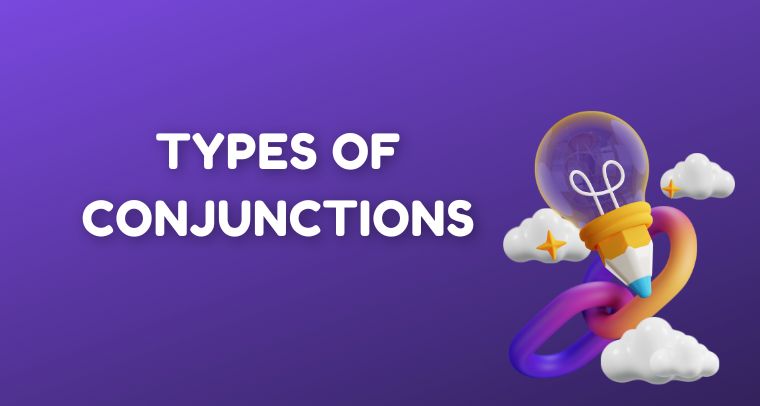Conjunctions are words that join two parts of a sentence (or two or more words) together. There are 4 types of conjunctions in the English Language: coordinating conjunctions, correlative conjunctions, subordinating conjunctions, and conjunctive adverbs.
Understanding The 4 Types of Conjunctions
Coordinating Conjunctions
Coordinating conjunctions are the most common type and are used to join two equal sentence elements, such as two nouns, two verbs, or two adjectives. The coordinating conjunctions are for, and, nor, but, or, yet, and so. Some examples of coordinating conjunctions are:
- And: Connects two complete sentences with subject-verb agreement.
- But: Connects a sentence that starts with but, and is followed by another sentence that begins with but.
- Or: Joins two complete sentences with no subject-verb agreement in the second sentence because it’s an exclamation point after every word except for a period in the end (!) which means it serves as an adverbial phrase too!
- Nor: Joins two complete sentences without any subject-verb agreement because they’re neither statements nor questions so we don’t need to worry about clashing with each other!
Correlative Conjunctions
Correlative conjunctions are words that are used in pairs in order to join two equal ideas or items together. By using correlative conjunctions, you can add variety and interest to your writing. Some of the most common correlative conjunctions are “both…and,” “either…or,” “neither…nor,” and “not only…but also.” When you use correlative conjunctions, be sure to use the same grammatical structure for both items that you’re joining together.
Examples:
- either/or – I want either the juice or the milk.
- whether/or – I didn’t know whether you’d want the juice or the milk, so I got both.
- both/and – We’ll have both the juice and the milk.
- neither/nor – Oh, you want neither the juice nor the milk? No problem.
- not/but – I see you’re in the mood not for desserts but appetizers. I’ll help you with those, too.
Subordinating Conjunctions
Subordinating conjunctions create subordinate clauses. The subordinate conjunction indicates the relationship between the two clauses and can be used to introduce a variety of different types of subordinate clauses. There are many subordinate conjunctions, each of which can be used to signal a different type of relationship between the two clauses. When using subordinate conjunctions, it is important to pay attention to grammar and ensure that the clauses are properly connected. Examples of Subordinating Conjunctions:
- Because it was raining, we had to cancel the exam.
- The house was a mess after the crazy party we had last night.
- He doesn’t go skiing anymore, since he had the accident.
Conjunctive Adverbs
Conjunctive adverbs are words that connect sentences. They can be words like “however” and “therefore”.
Conjunctive adverbs are often used in conjunction with other conjunctions, such as “but,” “and,” or even those two-word statements like: “I didn’t see him today but I saw him yesterday.” You can also use them independently from the other parts of your sentence (like when you want to emphasize something).
- John practiced the piano; meanwhile, her sister went out with his friends.
- Ali can’t afford a new car. Nonetheless, he bought a huge truck.
- My mom loves dogs. However, sometimes she is allergic to them.
- We watched the fireworks show at night. All in all, it was an outstanding experience.
Conclusion
So, there you have it – a comprehensive guide to the 4 types of conjunctions out there. Remember that conjunctions are a vital part of speech, and they can be very useful in making your writing flow more smoothly. Use them wisely, and don’t be afraid to experiment with different types to see which ones work best for you.

